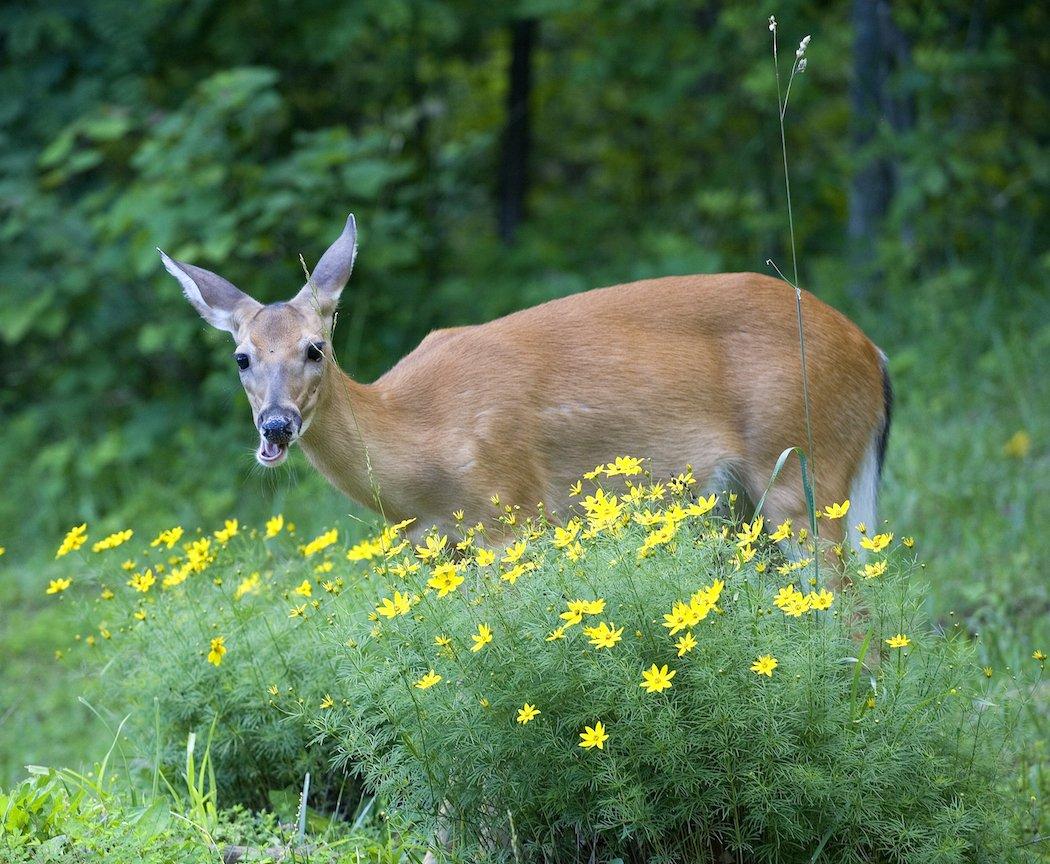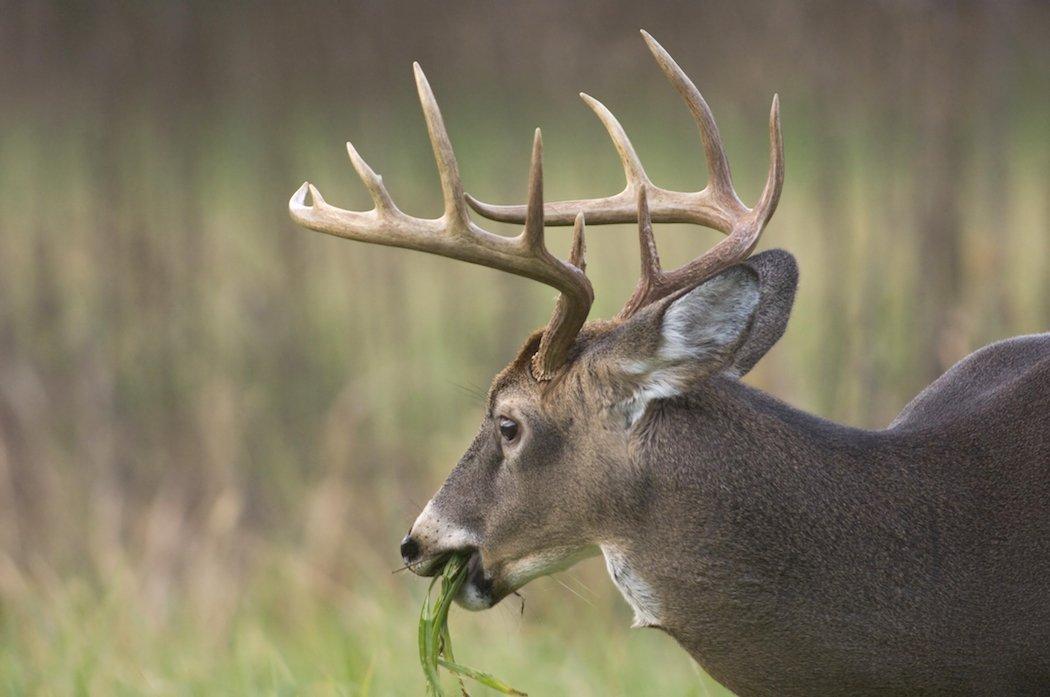Don't Forget This Important Part of the Management Plan
Throughout the years, my wife Carol and I have eaten many meals with Bill Jordan, David Blanton, Michael Waddel and other members of the Realtree crew. And although we've washed thousands of calories down with the best sweet tea the South could produce, I can't ever remember any of them being worried about carbohydrates. I will admit, we haven't dined with them in a while, so it is possible one or more of them may, heaven forbid, presently be on the Atkins diet where carbohydrates are avoided. However, I can assure you Bill Jordan hasn't put any of the deer on Realtree Farms on any low-carb diet in an effort for them to lose weight. In fact, at Realtree farms, just the opposite is occurring. The deer there, including the trophy bucks, are carbo loading big time.
Why Carbohydrates Are Important In Winter
Few hunters realize how much the rut saps the strength of a mature buck. I've photographed many trophy bucks in the late hunting seasons that looked like they were on the verge of death. Some do die during the post-rut, both in the North and in the South.
As a deer manager of your hunting property, certainly you want to do everything you can to assure the bucks on your land remain at their highest level of health possible. This assures you they will not only survive the stress-filled winter period, but they will be wearing their best racks possible when the next hunting season rolls around. This is where both food plots and supplemental feeding enter the picture.
Overall, protein gets the main focus in most deer food plot articles since it primarily is responsible for growing huge racks on whitetails. In fact, growth is its strength, whether it be antlers, or the growth of fawns in a pregnant doe. Moreover, when we think of protein, we think of food plot products. Carbohydrates, meanwhile, are energy sources. Some of you may have heard of carbo loading, a method of eating marathon runners use to guarantee they will make it through the 26.2-mile grind without hitting the wall. Most often, supplying high-energy carbohydrates to deer is associated with supplemental feeding, a feeding method assuring they will make it through the winter in good shape.
Corn is a high-energy carbohydrate food source, an excellent food to provide for deer in the winter. However, it contains only about 6 or 7 percent protein, so while it provides energy for the deer, it doesn't provide a great protein source for them. This is why it's important to have a variety of nutritious foods available for whitetails during the cold seasons. That's something Realtree Farms is currently practicing.
Don't Miss: 7 Tips for Using Food Sources to Fill Your Deer Tag
Implementing A Deer Management Strategy
I used to run a construction business, stated Roger Culpepper, property manager at Realtree Farms. A few years back, I started contracting with Bill Jordan to put in his food plots for him, clear brush and that sort of thing. As Bill accumulated land both by purchasing and leasing it, I became more and more interested in managing for wildlife. Then Bill really got serious about his food plots and to make sure he provided the most nutritious food possible for his deer. So he decided to employ a full-time property manager. He asked me and I jumped at the chance. He's even got me running video cameras now.
We're constantly looking for new and innovative ways to improve our managing strategy, Culpepper continued. And since you asked about our late fall, winter, and early spring feeding strategy that's what I'll explain in detail.
We have a high red clay content here on Realtree Farms and the first thing I do is take a soil test and have it analyzed. I follow the liming and fertilizing instructions for the product we're planting so we are assured we'll have the proper pH level. About mid-September, I'll use a heavy offset disc to break up the ground and then go over it a second time with a leveling disc. We use different methods of planting. We'll use a seed drill at times and if a plot is hard to get to or small I may use the Plotmaster. I'll often plant two Evolved Harvest products in one plot."
Don't Miss: Natural Food Sources for Deer
Supplemental Feeding Secrets

Culpepper mentioned how important it is to use the proper feeding troughs. He also shared ways to get the deer used to your feed and feeder. For example, use wooden feeding troughs about 6 feet long and 3 feet wide. The top lip of the trough is approximately 22 inches above the ground and the trough is 8 inches deep. Put a roof on the troughs and have them open so deer can see through them. This way they don't feel claustrophobic and will feel comfortable using the feeders.
"Bill Jordan loves to hunt big bucks. He also is very conscientious about being a good steward of the land he owns and leases."
The best way to get deer to use the feeder is to put out corn 30 or 40 feet from the feeder at first. At this point, the whitetails really start eating the feed and it then is a simple matter of working them on ahead over to the feeder.
Hunt mentioned the importance of placing your feeders in locations that are hidden from view from any road, yet they are still accessible so your feeding chores are easy. Ideally you should be able to pull up to the feeder in a pickup truck and pour the feed right into the trough.
Don't Miss: 7 Best Late-Season Food Sources for Deer
Be A Conservationist
Bill Jordan loves to hunt big bucks. He also is very conscientious about being a good steward of the land he owns and leases. Yes, he makes sure he has plenty of highly nutritious food plots available for his deer. And yes, he uses the best feed in his supplemental feeding program. However, he also plants a variety of other products that are beneficial to doves, quail, turkey and rabbits -- all small game hunters love to pursue.
He also makes sure an ample number of does are harvested from his properties each year because he realizes this is the only way to keep the native habitat healthy and vibrant. This provides his deer with a naturally nutritious food source and at the same time quality bedding cover is available to them.
Putting It All Together
Don't use supplemental feeding to try and raise the deer-carrying capacity of your land. While supplemental feeding — whether it be through food plots, or grain and specially formulated food products in feeders — can enable you to increase the numbers of healthy deer on your tract, it can be devastating to the natural habitat. This results in the deer relying disproportionately on supplement foods for their dietary needs. You're courting disaster if you do this. Whitetails need all three food sources to grow to their greatest potential — food plots, natural browse and cover, and supplemental feeding. This means you should scientifically determine the carrying capacity for deer on your land and keep them within those numbers through selective harvesting.
If you see a browse line in your forested tract, your deer numbers need to be reduced as soon as possible. If a browse line is not visible, but you want to determine how much the native forage is being used, fence off a small area, say 10 feet by 10 feet, for a comparison test.
How many feeders will you need on your land? A good question. Some managers recommend a minimum of one feeder per 160 acres. However, many hunters feel it is a good idea to have several feeders, rather than just one, even if you control a small tract. This keeps the deer dispersed, thereby avoiding the possibility of spreading disease.
Don't Miss: What Deer Eat: A Seasonal Guide to Nutrition
Editor's Note: This was originally published on February 26, 2004.
Are you a deer hunter wanting to learn how to accomplish your goals? Check out our stories, videos and hard-hitting how-to's on deer hunting.







